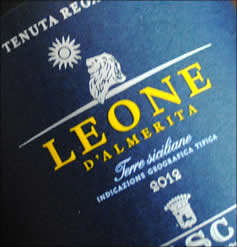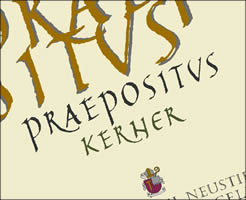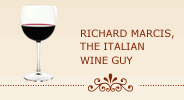Two Fine Italian White Wines for End-of-Summer Festivities
Wine for august - less than $20
Tenuta Regaleali, “Leone d’Almerita” Terre Siciliane IGT 2012 (about $18)
Tasca d’Almerita is an aristocratic wine estate with deep roots, so to speak. Founded in the 1830’s, the estate has served as a benchmark for Sicily’s best wines for well over a century. Even in the 1950’s and 60’s when Sicily was in the nadir of its winemaking doldrums, the wines of the Tasca d’Almerita estate were celebrated worldwide for their quality and value.
Things have changed since then and some of Italy’s most interesting and compelling wines are coming from Sicily. While the quality bar has been raised throughout Sicily, the Tasca d’Almerita estate has kept pace and continues to produce award-winning red and white wines.
Tasca d’Almerita owns five different estates spread throughout the island of Sicily. The Tasca d’Almerita family has owned Tenuta d’Almerita, located in Sicily’s rugged interior, since the mid-1830’s. It is the estate’s flagship winery where they produce a variety of red and white wines made from both indigenous and “international” varieties as well as a rosè and sparkling wine. Tasca d’Almerita also runs one of Italy’s most famous culinary schools.
Named after the lion on Tasca d’Almerita’s coat of arms, the estate’s  2012 Leone d’Almerita is composed of 50 percent Catarratto with a blend of Pinot Bianco, Sauvignon Blanc and Traminer Aromatico comprising the remaining 50 percent. Catarratto is an ancient variety native to Sicily that is frequently used to add body and alcohol to other local white varieties.
2012 Leone d’Almerita is composed of 50 percent Catarratto with a blend of Pinot Bianco, Sauvignon Blanc and Traminer Aromatico comprising the remaining 50 percent. Catarratto is an ancient variety native to Sicily that is frequently used to add body and alcohol to other local white varieties.
To maintain the wine’s fruitiness and freshness, the wine is fermented at cool temperatures in stainless steel tanks but does not undergo “malolactic” or secondary fermentation. The wine is aged on its yeasts in stainless steel tanks for 4 months and then is bottled and sold.
The Leone d’Almerita is marked with fresh citrus and white fruit aromas and a whiff of wild herbs. It has good body and structure balanced with a crisp streak of acidity.
This is a multi-purpose wine that can accompany any number of end-of-summer functions. It is excellent as an aperitivo by itself or it can liven up any number of activities where light hors d'oeuvres, platters of cold cuts, shellfish or fresh fruit are on the menu. Its crisp acidity also makes it an excellent companion to simply-prepared fish dishes as well as spicy Asian dishes.
Wine for August – over $20
Abbazia di Novacella, “Praepositus” Kerner 2011 (about $28)
The Abbazia di Novacella is a working monastery in the mountainous Alto Adige region in the far corner of northeastern Italy not far from the Austrian border. The monastery has been a prominent religious and cultural center since the 12th century and remains so to this day. The abbey’s monks are not the reclusive type and they have made the work of the abbey an integral part of the local community. In addition to growing grapes and making wines for sale they also raise vegetables and sell apple juice made with apples from the abbey’s orchards.
Although it is one of the oldest wineries in the world, the abbey has kept current with advances in viticulture and wine technology. Today it is one of Italy’s most highly regarded wineries and produces a line of both red and white wines that rank among some of Italy’s best. In 2009 Celestino Lucin, the abbey’s winemaker, was the recipient of Gambero Rosso prestigious Winemaker of the Year award.
Some of the abbey’s most prized wines are made from the relatively obscure Kerner white grape variety. The cold-tolerant Kerner thrives in this rugged, mountainous area and produces aromatic wines redolent of fresh mountain flowers.
The 2011 “Praepositus” Kerner is made entirely with Kerner grapes  grown in the abbey's vineyards immediately surrounding the abbey. The Praepositus is not a single-vineyard wine but is produced from select Kerner grapes from the abbey’s best vineyards.
grown in the abbey's vineyards immediately surrounding the abbey. The Praepositus is not a single-vineyard wine but is produced from select Kerner grapes from the abbey’s best vineyards.
Harvested in early October, the grapes are fermented in stainless steel tanks using only natural yeasts so as to highlight the Kerner grapes’ natural aromas and flavors. The wine is then aged in stainless steel and bottled in April where it spends 3 months resting prior to release for sale.
©Richard Marcis
August 4, 2013
To view other wine of the month selections, see Monthly Wine Reviews


